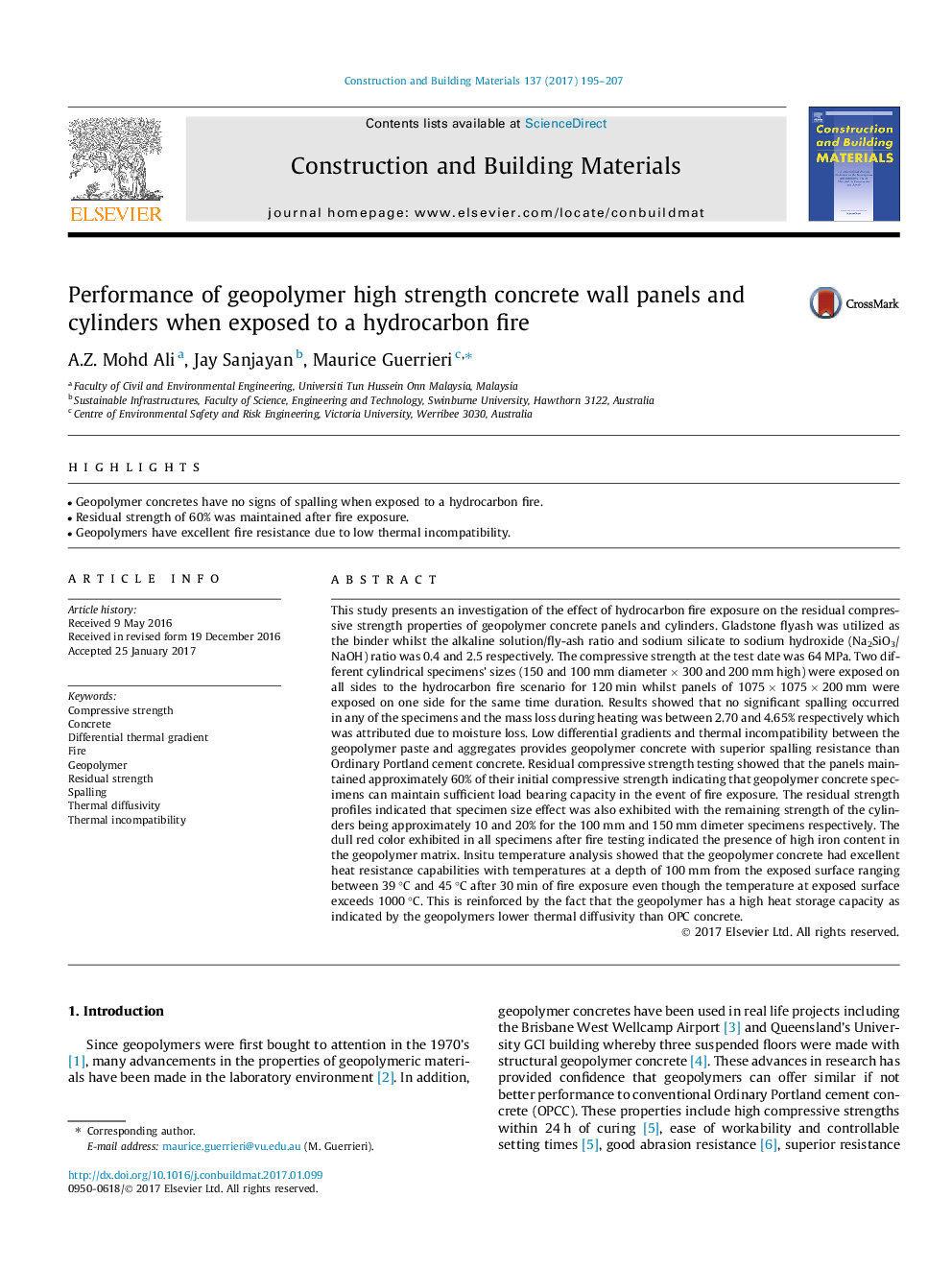| کد مقاله | کد نشریه | سال انتشار | مقاله انگلیسی | نسخه تمام متن |
|---|---|---|---|---|
| 4913438 | 1428769 | 2017 | 13 صفحه PDF | دانلود رایگان |
عنوان انگلیسی مقاله ISI
Performance of geopolymer high strength concrete wall panels and cylinders when exposed to a hydrocarbon fire
ترجمه فارسی عنوان
عملکرد پانل های دیواری بتنی با مقاومت بالا از ژئوپلیمر و سیلندر در معرض آتش سوزی هیدروکربنی
دانلود مقاله + سفارش ترجمه
دانلود مقاله ISI انگلیسی
رایگان برای ایرانیان
کلمات کلیدی
موضوعات مرتبط
مهندسی و علوم پایه
سایر رشته های مهندسی
مهندسی عمران و سازه
چکیده انگلیسی
This study presents an investigation of the effect of hydrocarbon fire exposure on the residual compressive strength properties of geopolymer concrete panels and cylinders. Gladstone flyash was utilized as the binder whilst the alkaline solution/fly-ash ratio and sodium silicate to sodium hydroxide (Na2SiO3/NaOH) ratio was 0.4 and 2.5 respectively. The compressive strength at the test date was 64 MPa. Two different cylindrical specimens' sizes (150 and 100 mm diameter Ã 300 and 200 mm high) were exposed on all sides to the hydrocarbon fire scenario for 120 min whilst panels of 1075 Ã 1075 Ã 200 mm were exposed on one side for the same time duration. Results showed that no significant spalling occurred in any of the specimens and the mass loss during heating was between 2.70 and 4.65% respectively which was attributed due to moisture loss. Low differential gradients and thermal incompatibility between the geopolymer paste and aggregates provides geopolymer concrete with superior spalling resistance than Ordinary Portland cement concrete. Residual compressive strength testing showed that the panels maintained approximately 60% of their initial compressive strength indicating that geopolymer concrete specimens can maintain sufficient load bearing capacity in the event of fire exposure. The residual strength profiles indicated that specimen size effect was also exhibited with the remaining strength of the cylinders being approximately 10 and 20% for the 100 mm and 150 mm dimeter specimens respectively. The dull red color exhibited in all specimens after fire testing indicated the presence of high iron content in the geopolymer matrix. Insitu temperature analysis showed that the geopolymer concrete had excellent heat resistance capabilities with temperatures at a depth of 100 mm from the exposed surface ranging between 39 °C and 45 °C after 30 min of fire exposure even though the temperature at exposed surface exceeds 1000 °C. This is reinforced by the fact that the geopolymer has a high heat storage capacity as indicated by the geopolymers lower thermal diffusivity than OPC concrete.
ناشر
Database: Elsevier - ScienceDirect (ساینس دایرکت)
Journal: Construction and Building Materials - Volume 137, 15 April 2017, Pages 195-207
Journal: Construction and Building Materials - Volume 137, 15 April 2017, Pages 195-207
نویسندگان
A.Z. Mohd Ali, Jay Sanjayan, Maurice Guerrieri,
